Antifreeze, also known as coolant, is a vital fluid used in car engines to regulate temperature and prevent overheating. Most antifreeze comes in different colors, with the most common being green and red.
This often leads to the question – can you mix different colored antifreezes together?
In this comprehensive guide, we’ll cover everything you need to know about mixing red and green antifreeze, including compatibility, benefits and risks, recommended mixtures, and best practices for fluid changes.
Whether you’re in a pinch or simply looking to optimize performance, read on to learn the dos and don’ts of combining different colored coolants.
Are Red and Green Antifreeze Compatible?
The short answer is yes – red and green antifreeze are technically compatible and can be mixed together. However, there are some important caveats.
Red and green antifreeze have the same basic components – ethylene glycol as the main antifreeze ingredient, along with corrosion inhibitors and other additives. So in an emergency or as a temporary solution, combining them will still provide freeze protection and cooling for your engine.
That said, mixing different colors is not recommended in the long-term. The reason is that the different dyes and additive packages in red and green antifreeze are often optimized for specific vehicles. Mixing can dilute these additive packages and reduce their long-term effectiveness.
For example, green antifreeze is typically formulated for use in a wider range of makes and models – both domestic and imported. Red antifreeze has additives designed for older American vehicles. Mixing colors means you lose the benefits of these optimized formulations.
Additionally, if one antifreeze product has silicate additives and the other uses non-silicate additives, mixing can cause gelling and build-up in the cooling system over time. This can lead to reduced heat transfer and engine issues.
So in summary – red and green antifreeze are compatible in a pinch, but mixing is not ideal for long-term performance and maintenance. Using the antifreeze specifically formulated for your vehicle is recommended whenever possible.
Potential Benefits of Mixing Red and Green Antifreeze
While mixing different colored antifreeze is not recommended long-term, there are some potential benefits in certain scenarios:
Emergency top-off – If you have a coolant leak and need to urgently top off the system, using whatever color antifreeze you have on hand can get you to a repair shop. This temporary mixture will get you by until you can flush and replace with the proper coolant.
Transitioning antifreeze types – Slowly mixing the old color with the new recommended formulation over time can help avoid issues when switching antifreeze. This gives the additives more time to blend properly. A 50/50 mixture for the first change can prevent gelling or build-up.
Expiring excess inventory – Leftover quantities of red or green antifreeze can be mixed together as the products expire, rather than disposing of unused portions. This efficiently utilizes what’s already on hand.
Cost savings – Buying whatever color antifreeze is on sale or available in bulk at the time can provide some cost savings, particularly for large fleet maintenance.
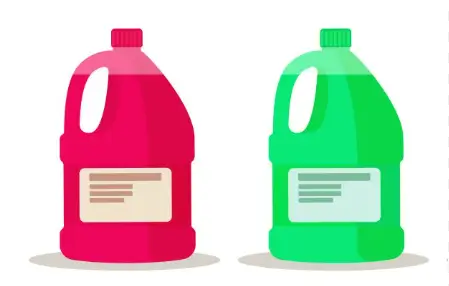
However, the long-term impacts should still be considered. Adjusting freeze protection – In very cold climates, mixing higher freeze protection red antifreeze with standard green can help lower the freezing point as needed. This allows customization for extreme conditions.
The key with any mixing is to pay attention to the condition of the fluid over time. Test antifreeze pH, specific gravity and freeze point to ensure adequate corrosion inhibitors are present and freeze protection has not been compromised.
Flush the system at recommended intervals to prevent additive imbalances from accumulating.
What Are the Risks of Mixing Red and Green Antifreeze?
While mixing red and green antifreeze can provide some benefits in unique situations, there are also some notable risks to be aware of:
Reduced corrosion protection – One major downside is that mixing colors dilutes the optimized corrosion inhibitor packages in each antifreeze. Red and green use different inhibitor formulas to target specific engine metals.
When mixed, the corrosion protection for all metals can be compromised. Additive imbalance – If one color antifreeze has significantly more or less of a certain additive like silicate, mixing can cause an imbalance.
Too much of an additive can result in scale deposits or solids that restrict coolant flow. Not enough can lead to corrosion issues over time. Lower freeze protection – Depending on the ratios mixed, the overall freeze protection level of the blended antifreeze could be reduced.
This means less safety margin against freezing in cold weather. Degraded performance – Mixing used coolant with depleted additives together with unused coolant does not effectively refresh the additive packages.
This can cause a gradual decline in performance over time. Difficulty assessing condition – Mixed, unmatching colors make it hard to visually monitor the antifreeze condition.
Contaminants or building solids are less noticeable. This can delay identifying maintenance issues. Engine damage – In a worst case scenario, reduced corrosion protection and freeze protection could ultimately lead to cracked blocks, head gasket issues, or even overheating and engine failure in some cases.
To minimize risks, avoid mixing whenever possible or consult your owner’s manual. If mixing, test antifreeze periodically and change at reduced intervals.
Watch for signs of additive imbalance like weep holes with unusual build-up, or pitting/corrosion around the radiator or water pump.
Recommended Mixing Ratios for Red and Green Coolant
If you decide to mix red and green antifreeze, either for an emergency top-off or gradual transition, follow these best practice ratios:
For emergency topping off:
Limit mixture to no more than 25% new color added to existing color. So add 1 quart red to 3 quarts existing green, or vice versa. This minimizes dilution. For gradual transition between colors:
Start with a 50/50 mixture of new and old antifreeze. This equal ratio gives additives time to blend. For second coolant change, use 25% old color, 75% new color. Finish with 100% new color by third change to complete transition. For extending inventory before disposal:
Mix at no more than 25% new with 75% existing color. This uses the oldest coolant first. Test conditions frequently and watch for additive precipitation or deposits. For cold climate extra freeze protection:
Add no more than 25% red to the existing green to drop the freeze point. Verify final mixture freeze point with a refractometer to confirm adequate protection. When in doubt:
Consult your owner’s manual for any specific mixing instructions or ratios. Contact the antifreeze manufacturer for technical guidance on appropriate mixtures. Consider having a cooling system professional perform the antifreeze change to ensure proper flush and fill.
Following these best practice dilution ratios allows antifreeze additives to integrate gradually without severely depleting or damaging the corrosion protection abilities long-term. It provides flexibility for specific scenarios while minimizing safety risks.
Best Practices for Changing and Flushing Antifreeze
To maximize antifreeze performance and minimize issues from mixing incompatible additives, follow these best practices for coolant changes and flushes:
Follow manufacturer service intervals – Coolant should be changed based on OEM time or mileage recommendations to replenish additives – typically every 2-5 years or 30,000-60,000 miles. Change colors completely – When switching antifreeze color technology, the system should be completely flushed to remove all old fluid.
Mixing should only be temporary. Flush with water first – Use plain distilled or demineralized water to initially rinse the majority of old antifreeze out of the system. This prepares for the new color.
Use a flushing agent – Flushing chemicals help fully dissolve and loosen any remaining deposits or build-up so they can be drained. This prevents transfer to the new antifreeze.
Flush again until clear – Rinse with additional water until it runs clear with no color residue. This verifies the system is clean before adding new antifreeze.
Check hoses/thermostat – Inspect components and replace any that are swollen, brittle or deteriorated. These can retain pockets of old fluid.
Fill using premixed coolant – Mix concentrated antifreeze with water yourself to avoid contaminating the new antifreeze. Use distilled water if possible.
Bleed air from system – Once refilled, run the engine and use the bleeder valves to purge any trapped air pockets. Air reduces coolant circulation. Retest condition after change – Check antifreeze pH, specific gravity, and freeze point after some runtime to verify proper dilution and protection levels.
Dispose of old coolant properly – Recycle used antifreeze responsibly so heavy metals and other contaminants do not enter the environment. Taking these steps when performing an antifreeze change or flush helps maintain the integrity of the coolant for optimal performance and longevity.
How Often Should You Change Antifreeze That Has Been Mixed?
When mixing different colored antifreeze, more frequent coolant changes are recommended to prevent additive imbalances from accumulating over extended time periods. Here are some general guidelines for change intervals:
If mixed as a temporary emergency top-off (up to 25% different color):
Change antifreeze within the next 6 months or at the next scheduled interval, whichever comes first. If mixed 50/50 to transition between colors:
Change antifreeze at 6 months or 5,000 miles to finish conversion to a new color. If mixed at 25% to extend inventory before disposal:
Change antifreeze within 3 months or monitor condition closely. Test frequently. If mixed 25% to increase freeze protection in cold climates:
Change antifreeze yearly to maintain enhanced protection level. If using a generic universal coolant as top-off:
Change system to OEM recommended fluid within next 1-2 months to retain corrosion protection. If unsure of mix ratio or fluid history:
Change antifreeze sooner rather than later, at 3 months or 3,000 miles. With extended life coolants:
Reduce longer change intervals by 25-50% if antifreeze has been mixed. The key is not allowing incompatible additives or depleted corrosion inhibitors to over-accumulate.
Flushing the system more frequently removes impurities before they can damage internal components. Testing antifreeze conditions reveals when protection has been compromised.
Consult your owner’s manual as some vehicles may have more specific guidelines for mixed coolant change intervals.
Signs of Antifreeze Issues Related to Mixing
Catching cooling system issues early is key to avoiding major engine damage. Be on the lookout for these warning signs that may indicate problems from mixed antifreeze:
Change in color – Antifreeze that appears muddy, cloudy or discolored rather than bright can indicate contaminants, rust, or additive imbalance. Debris/sludge build-up – Accumulation of deposits around caps, bleeder valves or inside the radiator often means corrosion inhibitors are lacking. Greasy/oily film – Oil contamination in the antifreeze allows cave leaks and reduces heat transfer. Check for leaks at the oil cooler and head gasket. Sweet smell – The scent of sugar or syrup can signify leaking coolant due to gasket issues or overheating damage.
White exhaust – Sweet smelling white exhaust smoke points to a combustion leak allowing antifreeze into the cylinders. Overheating – Mixed old and new antifreeze can have lower boiling points leading to overheating issues.
Foaming/bubbling – Excessive foaming inside the radiator or reservoir is a sign of air intrusion often caused by a failing water pump. Low levels – Coolant consumption and the need for frequent top-offs indicates an internal or external leak.
High pressure – Increased coolant system pressure can be caused by blockages from corrosion scale or gelling substances. Engine noise – Knocking or rattling noises may be the result of overheating damage or erosion from low coolant corrosion protection.
By identifying these warning signs early and thoroughly flushing the cooling system, severe engine damage from mixed antifreeze can be avoided. Proper maintenance is key to a long lasting mix-free antifreeze formulation.
Tips for Identifying What Color Antifreeze You Have
Figuring out whether there is red, green, or a mixture of antifreeze colors in your vehicle can be confusing when trying to sort out the best service approach. Here are tips for identifying the color:
Check coolant labels – The most straightforward way is looking for the original antifreeze jug with color listed right on it. Brand, type, and application may be specified too.
Look at the reservoir – In the see-through plastic reservoir, red antifreeze will appear orangish-red, green is opaque dark green, and yellow is bright yellow. Mixed colors appear muddied.
Use test strips – Chemical test strips are made to check antifreeze pH, but also change color according to glycol type.
Green for standard ethylene glycol, orange for hybrid OAT, etc. Shade against white – Pour a sample onto a white paper towel or rag to more clearly see the coloring. Green has a forest green tint while red is more burgundy. Smell test – Red antifreeze has a slightly sweet, almost fruity odor while green is more harsh/pungent.
Useful for identifying between major types. Ask about service history – Repair shops may have records of which antifreeze has been used for past fluid changes if the vehicle has been serviced there consistently.
Reference the owner’s manual – Many manuals specify the recommended coolant color, formulation, or compliance like Dex-Cool orange that should be used in that vehicle. Check under UV light – Shining a UV or blacklight on antifreeze makes colors glow brightly to easily distinguish red from green.
Send for laboratory testing – For only a few dollars, coolant testing labs can analyze a sample to identify glycol types, color, freeze point, additive levels and contaminants present.
Using a combination of these tactics provides conclusive evidence of which antifreeze types are present so you can decide whether to mix, flush, or use as-is. Identifying what’s in your system is half the battle toward making smart service decisions.
Does Antifreeze Color Indicate Quality or Performance?
There is a common misconception that the color of antifreeze indicates the quality or performance level of the fluid. However, the dye added to antifreeze to create red, green, yellow, or orange hues has no actual impact on how well it protects and cools the engine. Here is the truth about antifreeze color:
Color merely indicates chemical composition – Green is typically ethylene glycol while red denotes propylene glycol. But one is not necessarily better.
Color helps identify applications – Green is more general/universal while red is recommended for older domestic vehicles. But both can have nearly identical additives.
Bright appearance doesn’t mean new – Old, degraded antifreeze can still retain color while lacking corrosion inhibitors. Judge by service records, not color.
Darkening over time is normal – Antifreeze slowly oxidizes from heat and use, causing the color to dull. But this doesn’t affect freeze protection. Universal coolants are often purple – The grape color is cosmetic to avoid matching other types.
Performance depends on which additive package is used. Orange Dex-Cool lasts longer – While the color appears to imply extended life, it is really the organic acid inhibitors that allow longer change intervals.
Aftermarket additives darken color – Leak repair additives or engine treatments added to the radiator can turn light green antifreeze into dark green.
So while red, green, orange, yellow, and other colors make it easy to identify antifreeze types at a glance, never judge the quality or protection abilities by color alone. An older, darker green fluid could potentially outperform a newer bright red if additives are still sound. Laboratory testing reveals the true coolant condition.
Disadvantages of Using Only Universal Antifreeze
Generic universal antifreeze refers to budget aftermarket formulations not specifically tailored for any vehicle. While the lower cost may be appealing, relying solely on universal coolant does come with some notable disadvantages:
Lacks OEM-specific additives – Universal antifreeze is not formulated with additives optimized to protect the exact mix of engine metals and materials in your vehicle. Provides only baseline protection – Heavy-duty inhibitors for certain components may be missing.
Only the minimum standard corrosion package is included. Higher risk of corrosion – Because additives are designed for a wide range of vehicles, protection can be compromised as a trade-off. Potential compatibility issues – If existing fluid is OAT-based, mixing with traditional green universal coolant can cause gelling over time.
No warranty assurance – Often the vehicle manufacturer will not honor corrosion or cooling system warranties unless OEM fluid is used. Aftermarket brands provide no guarantees. Dilutes OEM fluid – Topping off with universal antifreeze slowly depletes original additives engineered for that model. No application expertise – OEM fluids are developed alongside engineers designing the engines. Aftermarket brands reverse-engineer.
Voids extended life formulations – Many newer vehicles rely on long-life coolant. Universal types provide only 2-3 years versus 5+ years protection.
While acceptable for a short-term fix or emergency fill, sustained use of generic universal antifreeze is risky compared to the OEM formulated product for your specific make and model.
Frequently Ask Question
Is it ok to top off different colored antifreeze?
Topping off antifreeze with a different color should only be done in an emergency, not for routine maintenance. Mixing colors dilutes the optimized additives over time. Only add up to 25% new color, then flush fully at the next service interval to avoid corrosion issues.
Can any color antifreeze be used in any car?
No, antifreeze comes in different colors based on the formulation and intended vehicle applications. Using the wrong color for your make/model can reduce corrosion protection. Always follow OEM specifications and use the proper color for your vehicle. Never use universal coolant as a permanent replacement.
How do you know if antifreeze is bad?
Warning signs of “bad” antifreeze include discoloration, strange odors, foam, and overheating issues. Have used coolant tested periodically to check pH, specific gravity and inhibitor levels. Flush the system immediately if additive packages are depleted, not just because of color change.
What color antifreeze lasts the longest?
Antifreeze color does not affect performance lifespan. OAT coolants last longer due to advanced corrosion inhibitors, typically 5-10 years. Green, red, orange etc. make little difference. Follow OEM service intervals, not color, to determine when fluid replacement is needed.
Can too much antifreeze damage an engine?
Yes, using straight concentrated antifreeze without diluting can damage seals and hoses over time. It also raises the coolant boiling point, increasing risk of overheating. Always premix antifreeze with distilled water to obtain the ideal 50/50 dilution for maximum corrosion protection and cooling.
Conclusion
In summary, mixing different colored antifreeze such as red and green should be avoided whenever possible for optimal performance and longevity.
While technically compatible for temporary fill-ins, the varied dyes and additive packages are not designed to work synergistically long-term.
Maintaining the original OEM-recommended formulation is ideal. If substituting colors, follow best practices for gradual transition including limited ratios, frequent testing, and accelerated complete flushes.
Watch for signs of incompatibility like build-up, overheating, consumption and other issues.Universal coolants provide bare minimum protection and come with multiple disadvantages compared to vehicle-specific formulations.
For top reliability and warranty coverage, always use the factory fluid color and change intervals per your owner’s manual. While the variety of antifreeze colors on the shelf can be confusing, do not let the related myths impact your service decisions.
Matching the optimal fluid technology to your exact vehicle model provides superior cooling system corrosion prevention and operating temperature control. With the right information and precautions, your engine can benefit from long-lasting, trouble-free antifreeze protection and performance.

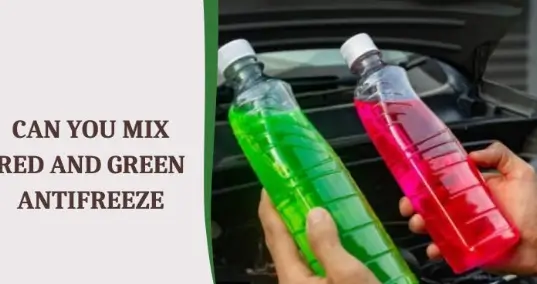
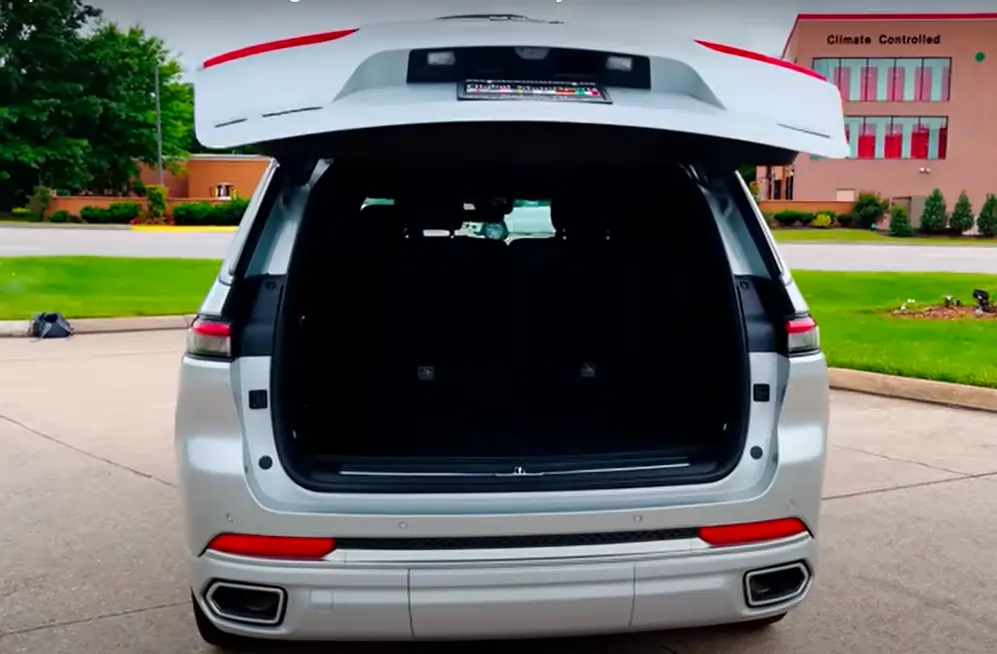
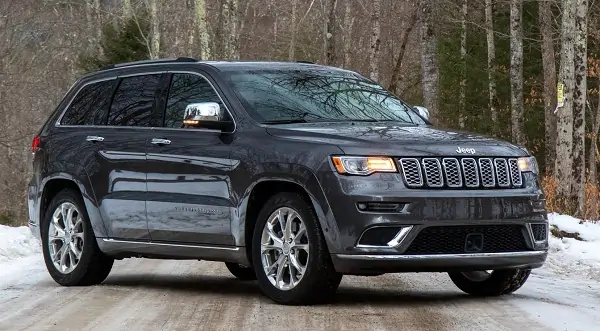




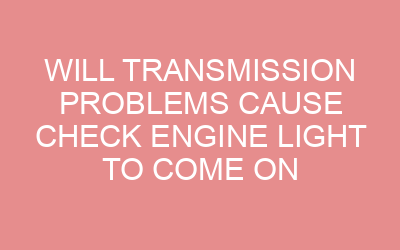

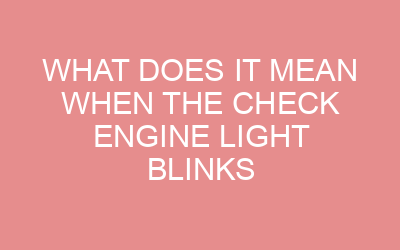



Leave a Reply